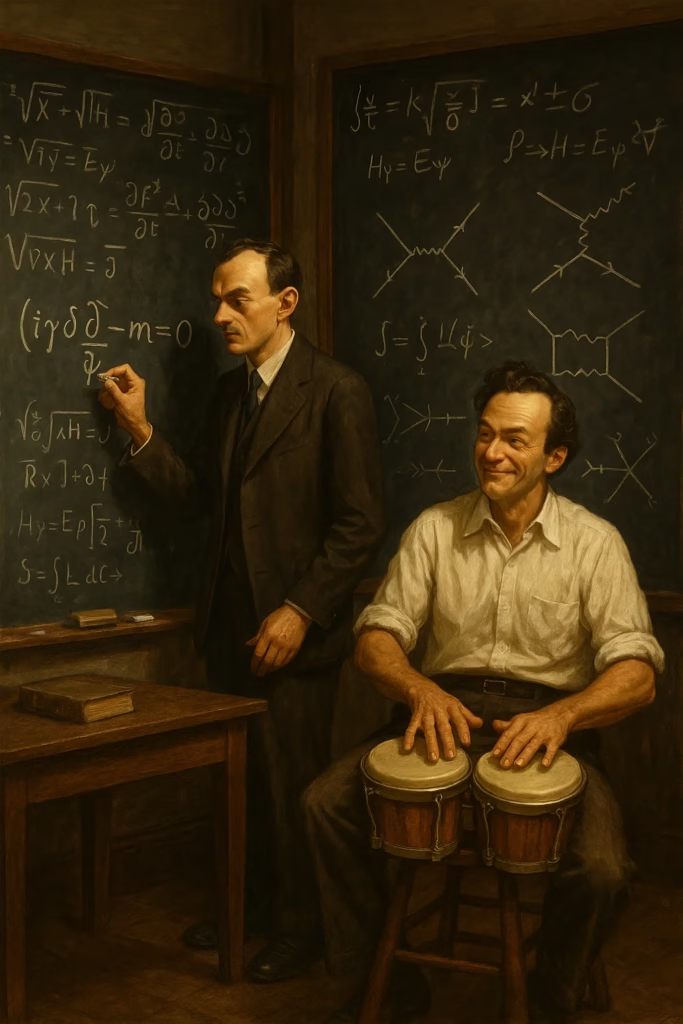The famous Dirac equation from 1928 and its experimental confirmation in 1932 brought the story of light’s mysteries to a situation resembling the late 19th century—we had a mathematically beautiful theory and its experimental verification, but instead of final truth, we got a new quantum twist.
Experimental Challenges: When Theory and Practice Diverge 🔍
After Carl Anderson confirmed the existence of the positron, a series of experiments revealed strange discrepancies. One of the most famous was the Lamb shift—a mysterious shift in the hydrogen atom’s spectrum that couldn’t be explained by existing theories.
Photons emitted by atoms tell us about the energy levels of electrons, and the Dirac equation gave solutions that slightly deviated from experimental data. An additional problem arose with the electron’s magnetic moment—measurements showed deviations from theoretical predictions.
From a purely mathematical perspective, the field theory developed by Dirac and other physicists faced serious challenges—singularities that yielded infinite values at small distances and high energies. It seemed that even quantum mechanics wasn’t a final theory.
Feynman: The Unorthodox Genius with Bongo Drums 🥁
A new generation of physicists emerged, led by the eccentric Richard Feynman—a young scientist with a thick New York accent, a passion for bongo drums, and a radically new approach to physics.
Instead of trying to create a completely new theory, Feynman sought more intuitive formulations of quantum mechanics. He developed the path integral—a revolutionary concept that sums all possible paths of a quantum particle (including photons), not just the most probable ones.
As the double-slit experiments showed, photons don’t travel only in straight lines—that’s just the most probable path, but all others are also possible, even if with low probability.
Feynman Diagrams: A Language for Describing the Impossible 📊
In a series of high-energy experiments, physicists observed strange phenomena of particle creation and annihilation. The most famous example is annihilation—a process where an electron and a positron disappear and create high-energy photons.
To describe these phenomena, Feynman proposed a brilliantly simple graphical form—Feynman diagrams. These diagrams became a universal language for describing quantum interactions, allowing physicists to visualize and calculate processes that were previously unimaginable.
Renormalization: A Clever Trick or an Admission of Ignorance? 🧩
Yet, the problem of singularities and infinite values remained. Feynman, inspired by the work of younger colleagues like Schwinger, proposed a controversial solution—renormalization.
In rough terms, renormalization suggests: “Let’s cut off everything that gives infinite values—all terms related to distances smaller than Planck length and high energies—and use experimental data as a benchmark.”
This was a practical approach reminiscent of calibration or curve fitting. Instead of a complete theory, Feynman offered an effective field theory—a theory good enough to provide precise answers within a certain range of dimensions and energies.
Virtual Photons: Ghosts That Influence Reality 👻
Virtual photons were introduced into this theory—particles that exist only in mathematical formalism but have tangible effects. The explanation of the Lamb shift lies precisely in the interaction of electrons with virtual photons.
This concept caused dismay among established physicists, most notably Dirac himself, who resignedly noted: “Small values have always been neglected, not infinitely large ones.”
Triumph of Precision: When Theory Becomes More Accurate Than Measurement 🏆
Despite the controversy, experimental confirmations began to arrive. QED produced predictions that matched experiments to 9–12 decimal places, making it the most accurate theory in all of physics.
QED wasn’t a final theory of all phenomena, but it was—and remains—an incredibly powerful tool for understanding light and matter in the range that is relevant to us.
In the next post, we’ll explore the incredible predictions of QED and the experiments that confirmed it with astonishing precision.


Leave a Reply